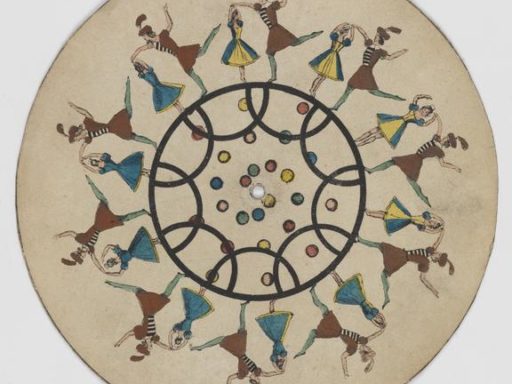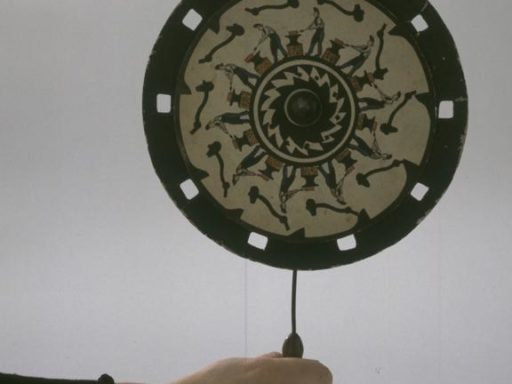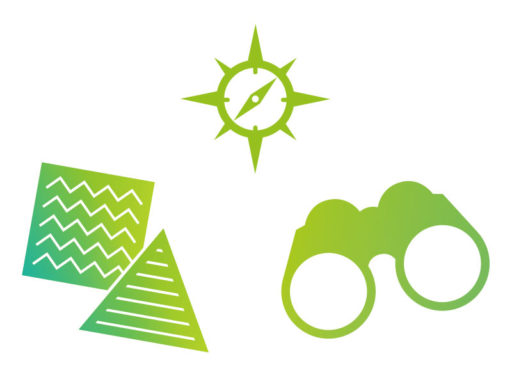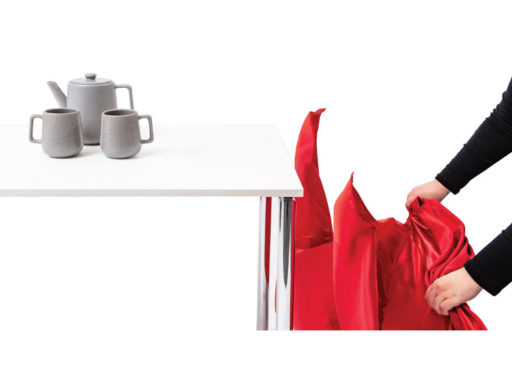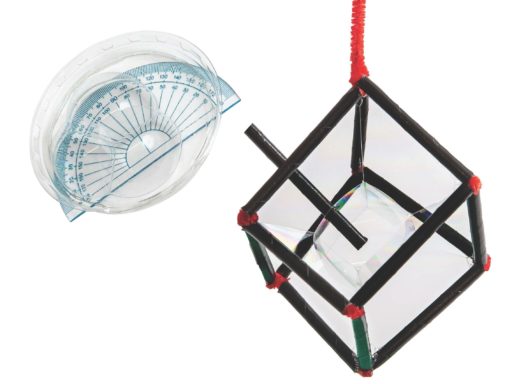An animation is made up of a sequence of still images shown in rapid succession, each image slightly different from the last.
This activity involves making a device called a phenakistoscope, which displays a continuously looping animation consisting of images drawn onto a spinning disc.
Printable downloads
Follow these steps…
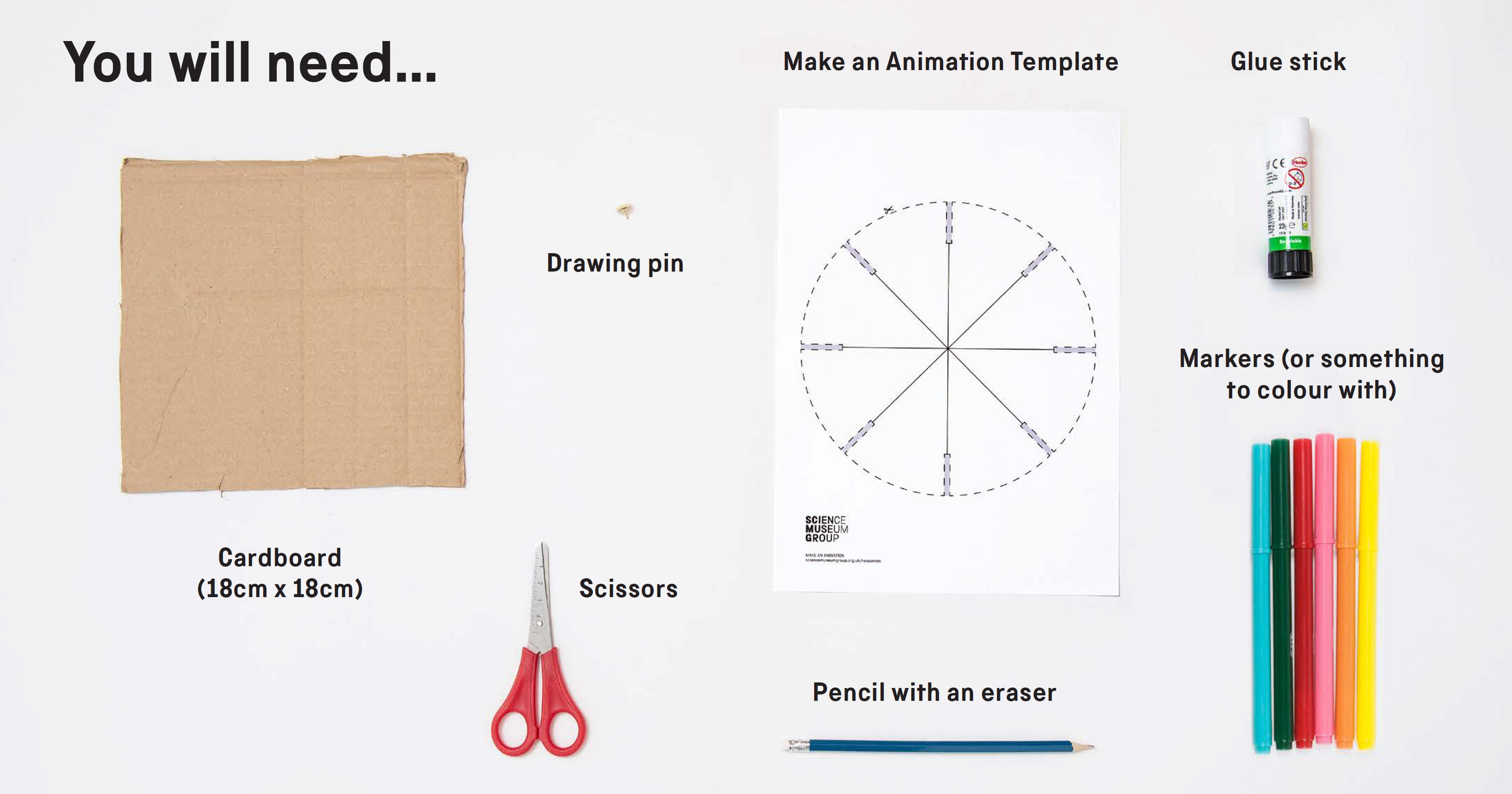
Note
Be careful when handling the drawing pin as it has a very sharp point.
-
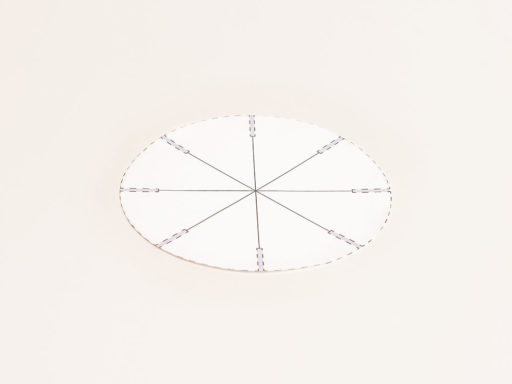 Cut out the template.
Cut out the template. -
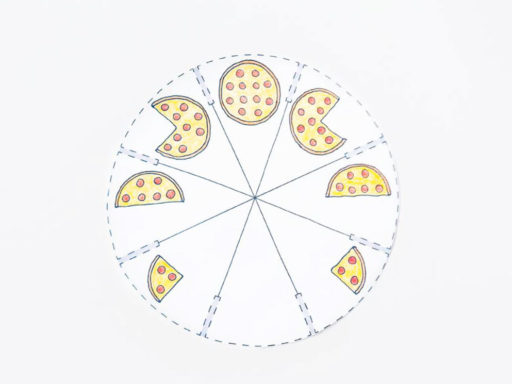 Draw a full pizza and no pizza opposite each other. In the sections in between, starting from the full pizza, draw the pizza with one-quarter less each time, as shown.
Draw a full pizza and no pizza opposite each other. In the sections in between, starting from the full pizza, draw the pizza with one-quarter less each time, as shown. -
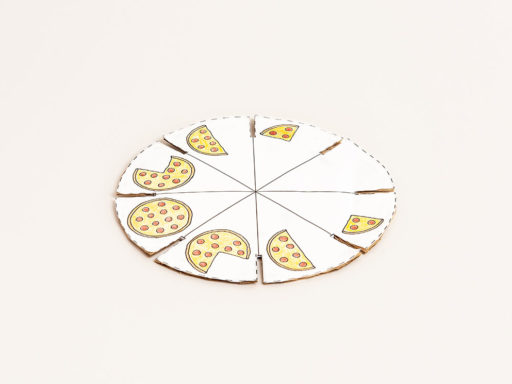 Glue the template to the cardboard, and carefully cut around the circle, including all the narrow slits.
Glue the template to the cardboard, and carefully cut around the circle, including all the narrow slits. -
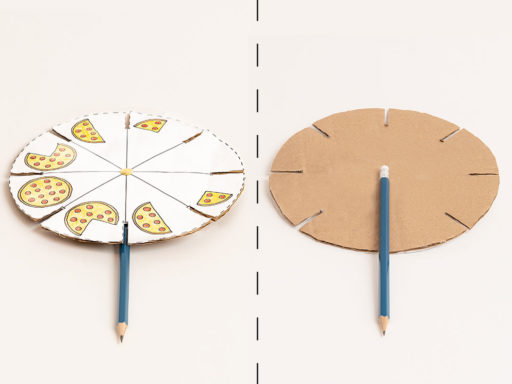 Carefully push the drawing pin through the centre of the circle and onto the pencil eraser.
Carefully push the drawing pin through the centre of the circle and onto the pencil eraser. -
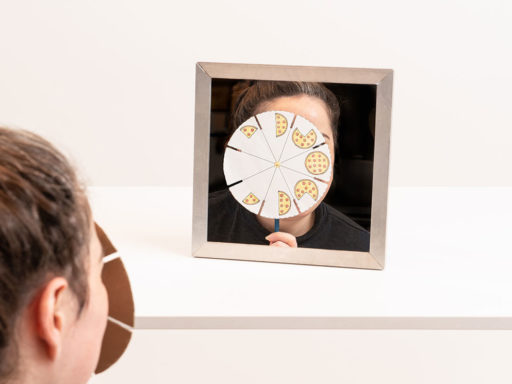 Stand in front of a mirror, close one eye and look through a slit with your other eye. While looking at the images in the mirror this way, give the wheel a spin and you’ll see your pictures brought to life!
Stand in front of a mirror, close one eye and look through a slit with your other eye. While looking at the images in the mirror this way, give the wheel a spin and you’ll see your pictures brought to life!
Think and talk about…
- Is it a smooth animation? Why or why not? What could you do to make it better?
- Other than in slices, how else could a circle be divided into fractions? For example, what does a quarter moon look like?
- How is this similar to a film you would see at the cinema?
Investigate…
- Try spinning the wheel at different speeds. How does the speed change what you see?
- Try making another wheel with a larger number of sections. How does this compare to your first one?
- Try drawing something else – for example a ball going up and down, or a balloon growing and shrinking in size. Follow your curiosity and see where it leads.
Did you know?
The phenakistoscope was invented independently by two people – Joseph Plateau, a Belgian mathematician and physicist, and Simon Stampfer, an Austrian mathematician – at almost the same time in 1833.
What’s the maths?
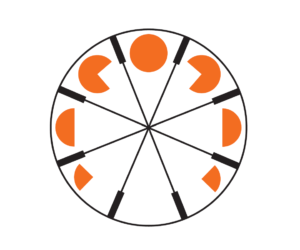 Animation works in the same way as film or video. In each case, the viewer’s eyes are presented with a sequence of still images, called frames. The number of frames displayed each second, called the frame rate, is important: below about ten frames per second, a film or animation will look jerky. It’s also important that each frame appears separately from the others, rather than them all blurring together. That is what the slits are for on the phenakistoscope. For a looping animation, the differences from one frame to the next must be carefully worked out, to ensure that the animation returns smoothly to the first frame.
Animation works in the same way as film or video. In each case, the viewer’s eyes are presented with a sequence of still images, called frames. The number of frames displayed each second, called the frame rate, is important: below about ten frames per second, a film or animation will look jerky. It’s also important that each frame appears separately from the others, rather than them all blurring together. That is what the slits are for on the phenakistoscope. For a looping animation, the differences from one frame to the next must be carefully worked out, to ensure that the animation returns smoothly to the first frame.
In the activity, the animation is made up of eight frames. Frame by frame, the pizza loses one-quarter of its size, then at the half-way point begins gaining one-quarter back again so it is whole as the sequence begins again.
Maths in your world
 Television in the UK shows 25 frames per second; in the USA it is 30. For films at the cinema it is almost always 24 frames per second. Smartphones that can record in slow motion capture a hundred or more frames per second. That way, when the footage is played back at a much slower frame rate, the movement will be slowed down but the frame rate will still be high enough to ensure that the video doesn’t look jerky.
Television in the UK shows 25 frames per second; in the USA it is 30. For films at the cinema it is almost always 24 frames per second. Smartphones that can record in slow motion capture a hundred or more frames per second. That way, when the footage is played back at a much slower frame rate, the movement will be slowed down but the frame rate will still be high enough to ensure that the video doesn’t look jerky.
Explore more…
The Science Museum Group’s collection has many beautiful examples of phenakistoscopes, which were often used as toys.
